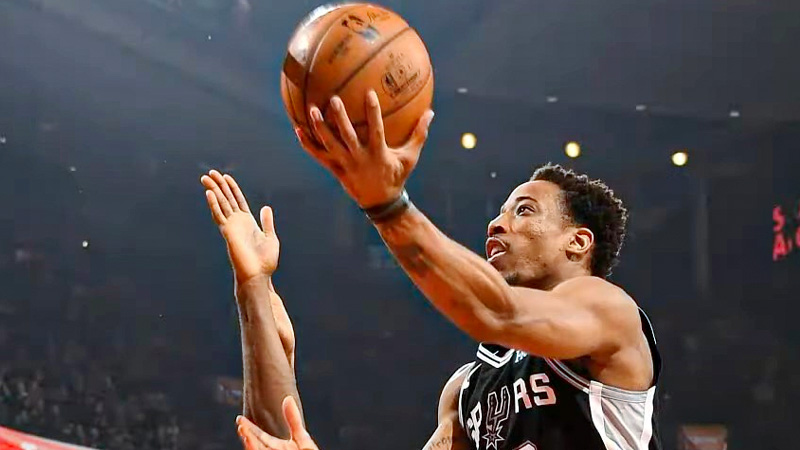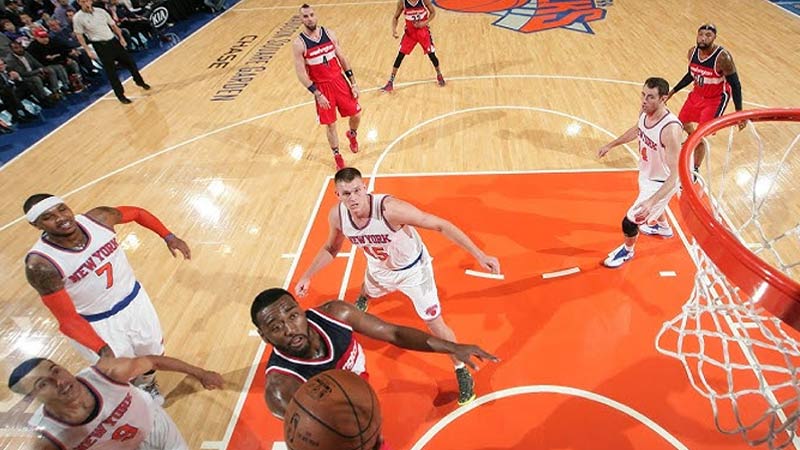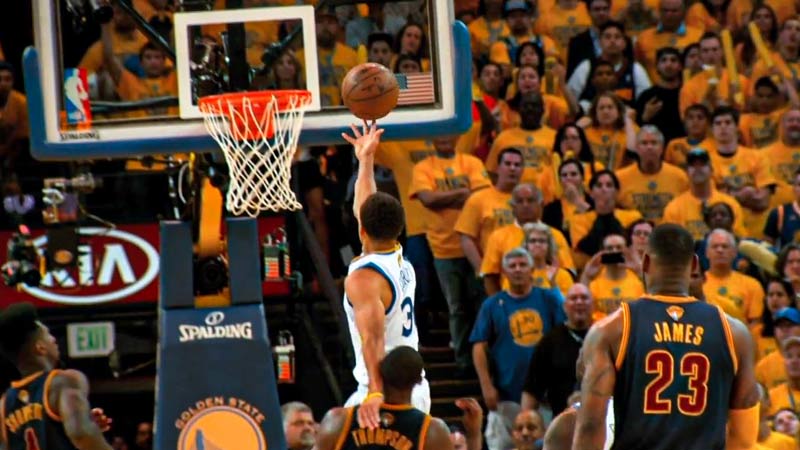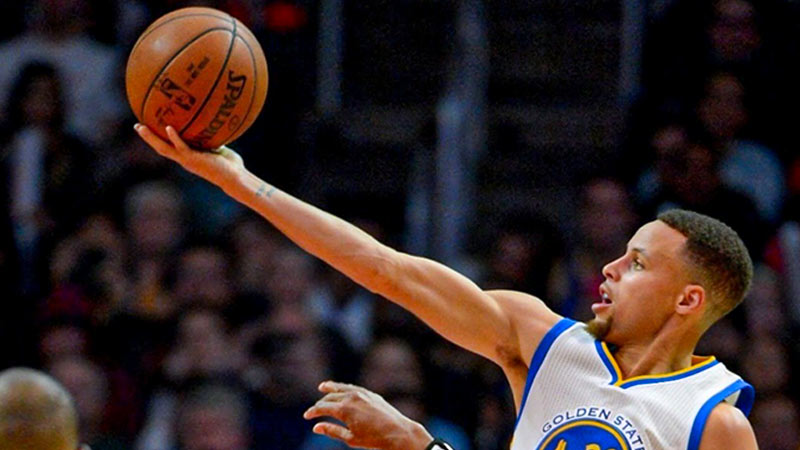When it comes to basketball, the layup is one of the most basic yet essential moves in a player’s repertoire. It’s a fundamental skill that every basketball player, from beginners to professionals, must master.
In this article, we’ll delve into the details of what is a layup in basketball, how it’s executed, and its importance in the game.
What Is a Layup in Basketball?
In basketball, a layup refers to a shot taken near the basket where the player attempts to lay the ball into the hoop using one hand. It is typically performed while driving towards the basket, often after dribbling past defenders or receiving a pass from a teammate.
The layup is a close-range shot that aims to avoid the opposing team’s shot-blocking efforts and secure an easy two points.
Importance of Layups in Basketball
Layups are one of the fundamental skills in basketball and play a crucial role in the overall strategy and success of a team. Here are some reasons why layups are important in basketball:
High-Percentage Shot
Layups are typically taken near the basket, offering players a close-range shot with a higher probability of success. This makes them high-percentage shots, meaning they have a greater chance of going in compared to longer shots like jump shots or three-pointers.
By converting layups consistently, teams can increase their scoring efficiency and accumulate points more effectively.
Fast-break Opportunities
Layups are often the go-to shot during fast breaks. A fast break occurs when a team quickly advances the ball up the court after gaining possession. During a fast break, players aim to score before the opposing team has a chance to set up their defense.
Layups allow players to capitalize on the speed and momentum of a fast break, providing a quick and efficient scoring option.
Points in the Paint
The area close to the basket, commonly referred to as the “paint,” is highly contested in basketball. Scoring in the paint is important because it puts pressure on the defense and opens up opportunities for other offensive plays.
Layups enable players to penetrate the defense, drive into the paint, and either score or draw fouls. This can lead to high-percentage shots, free-throw opportunities, or even collapsing the defense and creating openings for teammates on the perimeter.
Drawing Fouls
Layups are often accompanied by contact from defenders, increasing the likelihood of drawing fouls. When a player is fouled while attempting a layup, they are awarded free throws, providing an opportunity to score points without the clock running.
Drawing fouls on layups can also put the opposing team’s players in foul trouble, potentially forcing them to sit on the bench or play more conservatively on defense.
Momentum and Confidence
Successfully converting a layup can boost a player’s confidence and provide a sense of momentum for the team. When players consistently make layups, it can lead to positive energy, motivate teammates, and demoralize the opposition.
This positive momentum can have a significant impact on a game’s outcome, especially during close and crucial moments.
How to Do A Layup?

Performing a layup in basketball involves a combination of proper footwork, body control, and shooting technique. Here’s a step-by-step guide on how to execute a basic layup:
Approach the Basket
Start by dribbling the ball towards the basket from the perimeter or receiving a pass while moving towards the hoop. Use your dominant hand to control the ball.
Footwork and Timing
As you approach the basket, take a couple of quick, controlled dribbles to gain momentum. Typically, you’ll want to take your last dribble just before you reach the designated spot from where you’ll jump off for the layup.
Jumping Technique
As you take your final dribble, jump off your inside (closest to the basket) foot while extending your outside foot slightly behind you. This jump provides the necessary power and elevation for the layup.
Shooting Hand and Arm Position
While in the air, bring your shooting hand (dominant hand) up towards the rim, keeping your elbow bent at a 90-degree angle. Your off-hand can be used to protect the ball from defenders or provide balance.
Layup Release
As you reach the peak of your jump, extend your shooting arm and release the ball towards the backboard. Aim to release the ball softly off the backboard, using the appropriate amount of touch to guide it into the basket.
Focus on the Target
Keep your eyes locked on the backboard or the area of the rim where you intend to release the ball. This visual focus will help with accuracy and consistency.
Body Control
Maintain body control and balance throughout the layup. Use your core muscles to stabilize your body in the air and adjust your position if needed to avoid defenders or obstacles.
Landing
After releasing the ball, prepare to land safely. Extend your legs slightly to absorb the impact and land on both feet simultaneously to maintain balance and stability.
It’s important to note that the specific technique and approach to a layup can vary depending on the situation and player preferences. Practice and repetition are key to developing the necessary coordination, timing, and touch required for successful layups.
When To Attempt a Layup?

Knowing when to attempt a layup in basketball depends on various factors, including the game situation, positioning, and defensive presence.
Here are some situations when attempting a layup is often a good decision:
Open Path to the Basket
If you have an open path to the basket with no defenders in close proximity, it’s a prime opportunity to attempt a layup. This typically occurs during fast breaks or when the defense fails to recover quickly.
Beat the Defense
When you have successfully beaten your defender off the dribble or with a well-executed move, it’s an ideal time to attempt a layup. If you can get past your defender and establish an advantageous position near the basket, a layup becomes a high-percentage shot.
Weak Defensive Presence
If you notice a lack of shot blockers or weak defenders near the basket, attempting a layup becomes more favorable. Exploiting defensive mismatches or exploiting gaps in the defense can lead to easier scoring opportunities.
Driving from the Perimeter
When you penetrate the defense from the perimeter, driving toward the basket provides an opportunity for a layup. If you can navigate through the defense and find a clear path to the hoop, taking a layup can be an effective way to score or draw a foul.
Fast Break Situations
During fast breaks, when your team has a numerical advantage or the defense is disorganized, attempting a layup is often the preferred choice. Layups are high-percentage shots in these situations and can quickly increase your team’s lead or momentum.
Offensive Rebounds
If you grab an offensive rebound near the basket, taking a quick layup before the defense has a chance to react is a smart decision. The element of surprise and proximity to the hoop make layups a favorable option in offensive rebound situations.
Penetrating the Paint
When you successfully penetrate the paint and find yourself in the vicinity of the basket, it’s an opportune time to attempt a layup. Driving into the paint puts pressure on the defense and can create scoring chances or draw fouls.
It’s important to note that decision-making in basketball is dynamic and depends on the specific circumstances of each play.
Sometimes a layup might not be the best option, such as when met with strong shot-blocking defenders or when there are open teammates for an easy pass. Ultimately, a player’s basketball IQ, awareness, and ability to read the game will influence their decision to attempt a layup.
8 Types of Layup Shots

There are several different types of layup shots in basketball, each with its own specific technique and purpose. Here are eight common types of layup shots:
Regular Layup
The regular layup, also known as the basic layup or finger roll, is the most fundamental type of layup. It involves driving towards the basket and using one hand to softly release the ball off the backboard and into the hoop.
Reverse Layup
The reverse layup is executed by approaching the basket from one side and then using the hand on the opposite side to shoot the ball. The shooter jumps off the outside foot and releases the ball on the other side of the rim, often using the backboard for a higher percentage shot.
Underhand Layup
The underhand layup also called the “granny” shot, involves shooting the ball with a sweeping motion underhand. This technique is typically used when a player wants to add extra finesse or needs to shoot with less defensive interference.
Euro Step
The Euro step is a move often employed by players to evade defenders and create space for a layup. It involves taking a long step in one direction, quickly followed by a step in the opposite direction.
This technique allows players to change their direction of attack and finish the layup while avoiding the defender.
Power Layup
The power layup, also known as the strong-side layup, is utilized when a player wants to finish at the basket while absorbing contact from a defender. It involves using one’s strength to drive through the defender and finish the layup using power and body control.
Floater
The floater is a type of layup that is used when a player is in close proximity to the basket but wants to avoid shot-blocking defenders.
It involves shooting the ball with a soft touch, using a high release point and minimal backboard contact, to loft the ball over the defenders and into the hoop.
High-Off-The-Glass Layup
This type of layup is utilized when there are shot blockers or tall defenders near the basket. Instead of shooting the ball directly at the hoop, the player releases the ball higher off the backboard to create a difficult angle for the defenders and increase the chances of the shot going in.
Runner
The runner, also known as the teardrop, is a layup shot taken while moving at a moderate speed. It involves shooting the ball with a high release point, typically with one hand, while using a soft touch.
The runner is effective when driving into the paint and needing to release the ball before reaching the defenders near the basket.
FAQs
Is the layup only for shorter players?
No, the layup is not exclusive to shorter players. Players of all heights can utilize the layup as a scoring option near the basket. While shorter players may have an advantage in terms of maneuvering through defenders, taller players can use their size and reach to finish layups effectively.
Can the layup be performed with both hands?
Yes, the layup can be executed with both hands. While the dominant hand is typically used for shooting, players should practice layups with their non-dominant hand as well to become more versatile.
Developing ambidexterity in finishing at the basket allows players to adapt to different defensive scenarios and increases their scoring options.
Is the layup the only type of shot players attempt near the basket?
No, the layup is just one type of shot that players attempt near the basket. Other common shots in close range include floaters, hook shots, and bank shots.
These shots provide players with alternative options depending on the positioning of defenders and the player’s comfort level with specific techniques. However, the layup remains the most straightforward and frequently used shot near the basket.
Are there any specific drills to improve layup skills?
Yes, there are several drills that can help improve layup skills. Here are a few examples:
- Mikan Drill: This drill involves alternating layups with the right and left hand while standing under the basket, focusing on proper footwork and hand control.
- Layup Lines: Players line up along the baseline and take turns driving to the basket, executing layups from various angles. This drill helps simulate game-like situations and improves decision-making and finishing under pressure.
- Two-Ball Layups: Players dribble two basketballs simultaneously and perform layups, promoting coordination and ambidexterity.
- Power Layups: Players practice explosive layups by starting from a distance and driving towards the basket, emphasizing a strong takeoff and finishing through contact.
Can the layup be blocked by defenders?
Yes, defenders can block layup attempts. Since the layup is performed close to the basket, defenders have the opportunity to challenge the shot and attempt to block it.
This makes it crucial for offensive players to develop body control, change their shot release point, or utilize the off-hand to protect the ball from defenders.
Final Words
That was all about what is a layup in basketball. In short, the layup is a fundamental skill in basketball that every player should master. Its simplicity and effectiveness make it a go-to move for players at all levels.
By understanding the technique, practicing the footwork, and developing body control, players can enhance their offensive game and contribute significantly to their team’s success.
So, next time you step on the court, remember the importance of the layup and its role in the game of basketball.







